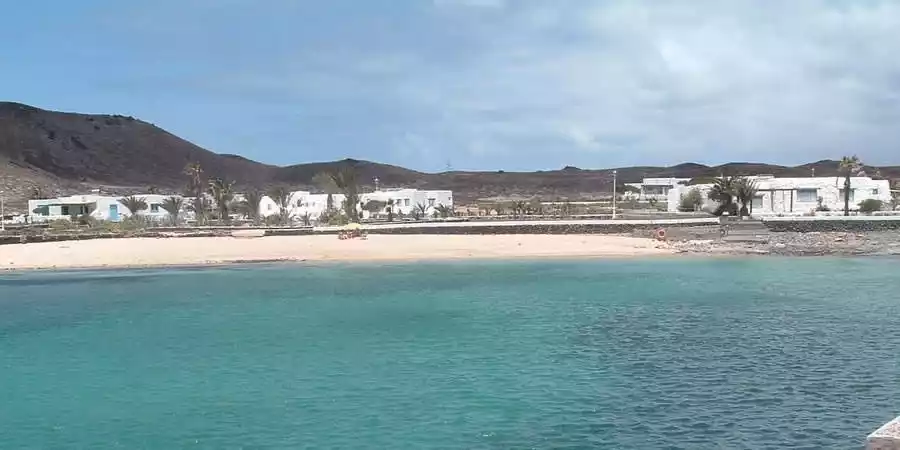
Pedro Barba is a small village on the island of La Graciosa, located at the northern end of the island. It lies about 3 km northwest of the port of Caleta del Sebo, which is the main population center of La Graciosa. Pedro Barba consists of just a few dozen houses, all low-rise with very thick walls. And, naturally, due to the desert-like conditions in the area, cacti are the main vegetation that decorates the arid gardens of the houses.
It is a very exclusive and well-kept area also known as Casas de Pedro Barba. It’s a true dream village maintained with meticulous detail.
Pedro Barba is characterized by its traditional Canarian-style houses, which have been carefully restored and preserved, giving them a picturesque and charming appearance. Additionally, the village has a small white sandy beach with crystal-clear waters called Playa de las Conchas, considered one of the best beaches in Spain.
In Pedro Barba, visitors can enjoy a calm and relaxed atmosphere, ideal for disconnecting from the hustle and bustle of the cities. The village is also a starting point for excursions around the island, such as a trip to Montaña Bermeja, an inactive volcano offering breathtaking panoramic views of La Graciosa and its surroundings.
Pedro Barba has a beautiful, quiet beach 110 meters long where you can swim almost alone. This peaceful cove of sand and gravel, with calm waters and spacious dimensions, offers the opportunity for a relaxing swim practically in solitude.
Pedro Barba beach is a small cove of sand and gravel, with calm waters, measuring 115 meters long and 25 meters wide.
Pedro Barba is separated by 6 km from Caleta de Sebo, making it a lovely excursion along the coast.
It is the main entry and exit point for the island, as it is the place where the boats that connect La Graciosa with the...
In summary, Pedro Barba is much more than a simple village; it is a unique destination that combines exclusivity, natural beauty, and tranquility, offering visitors an unforgettable experience in the heart of La Graciosa.
Los fundadores de Pedro Barba llegaron en una segunda oleada de familias, que decidieron seguir el ejemplo de los habitantes de Caleta de Sebo. Desde los años treinta hasta los sesenta del siglo XX, esta pequeña aldea de casas bajas, de muros gruesos, de luz exuberante y de mar generoso se transformó en un lugar paraíso hacia donde se dirigió la emigración lanzaroteña.